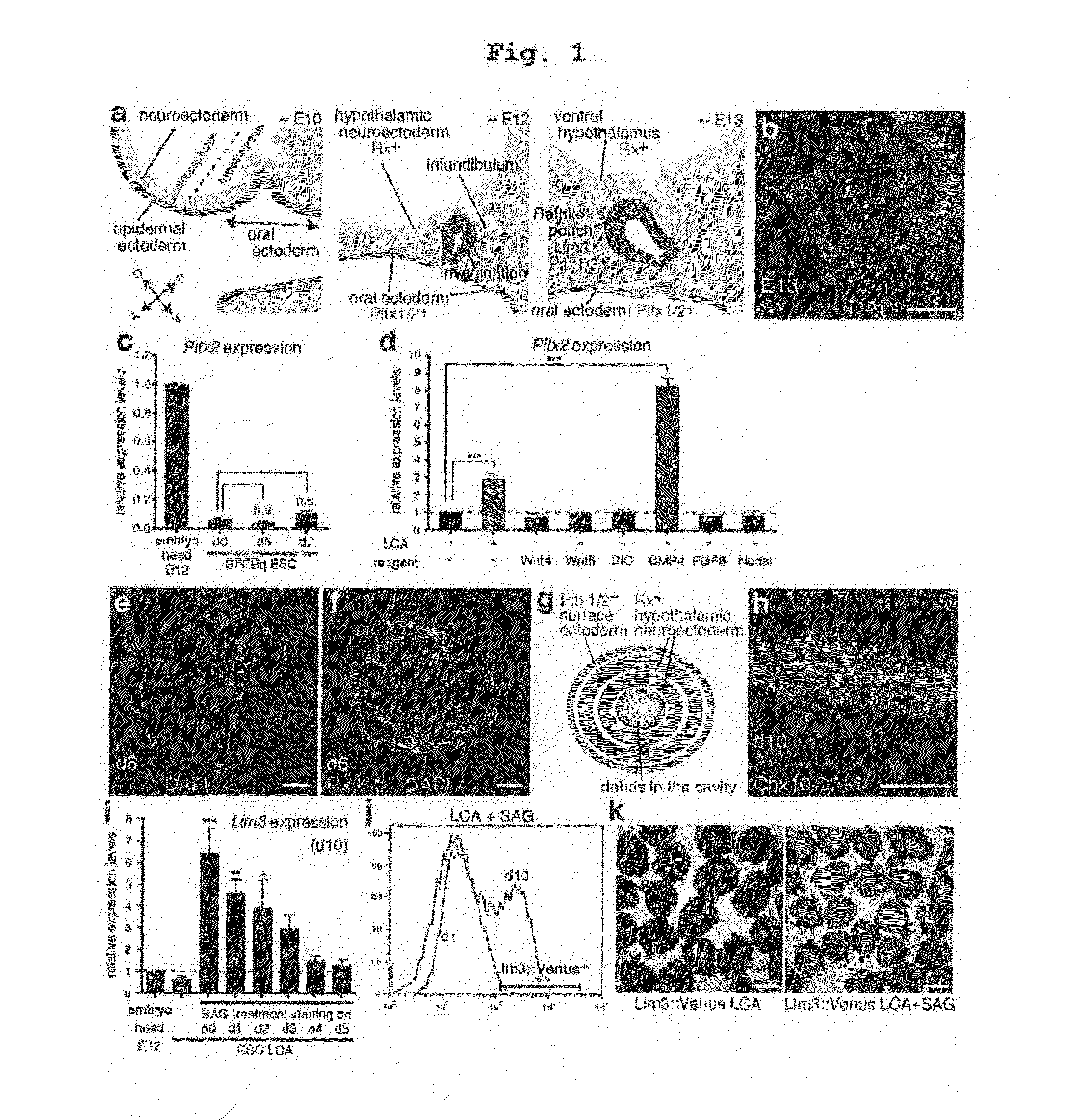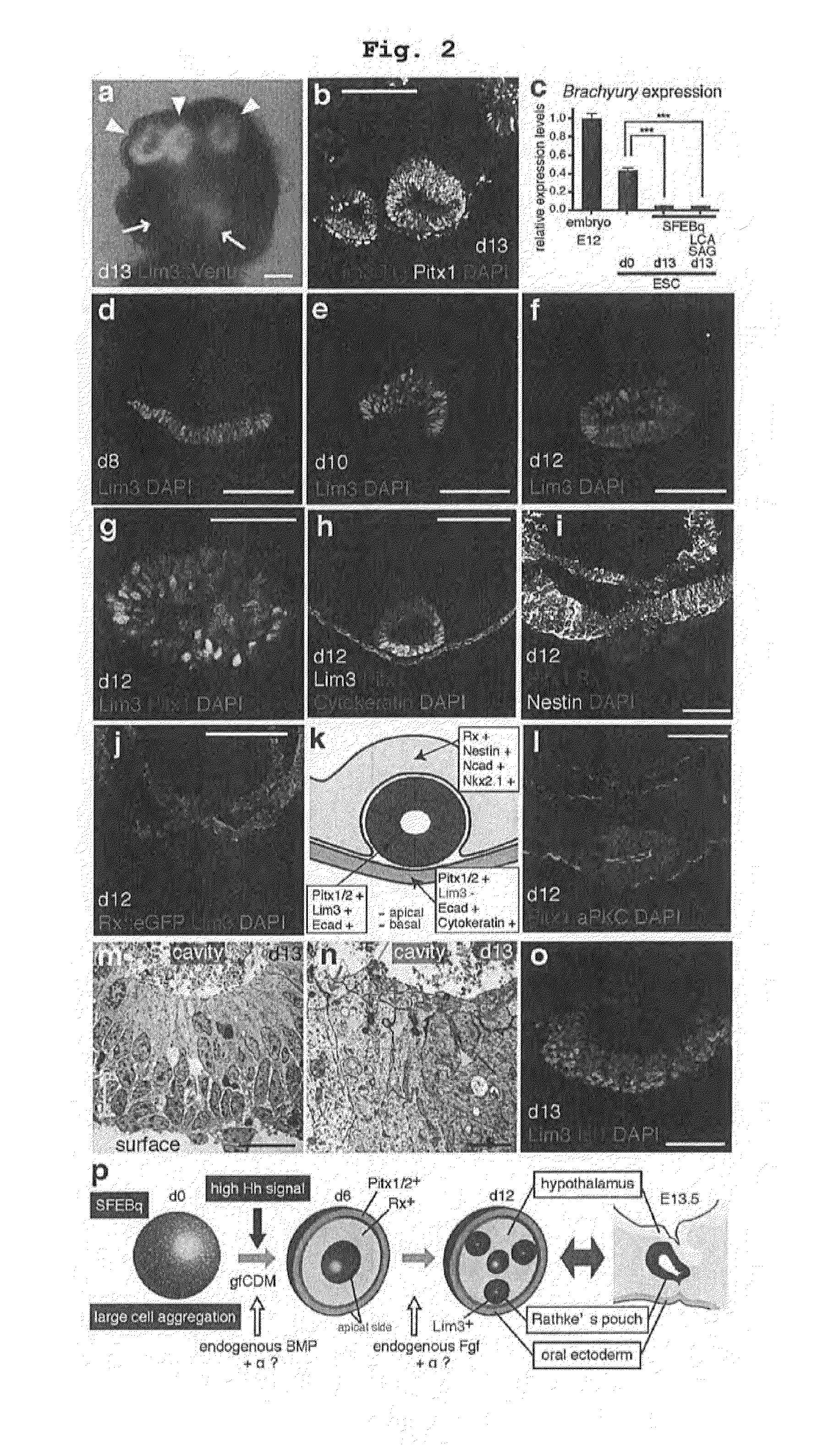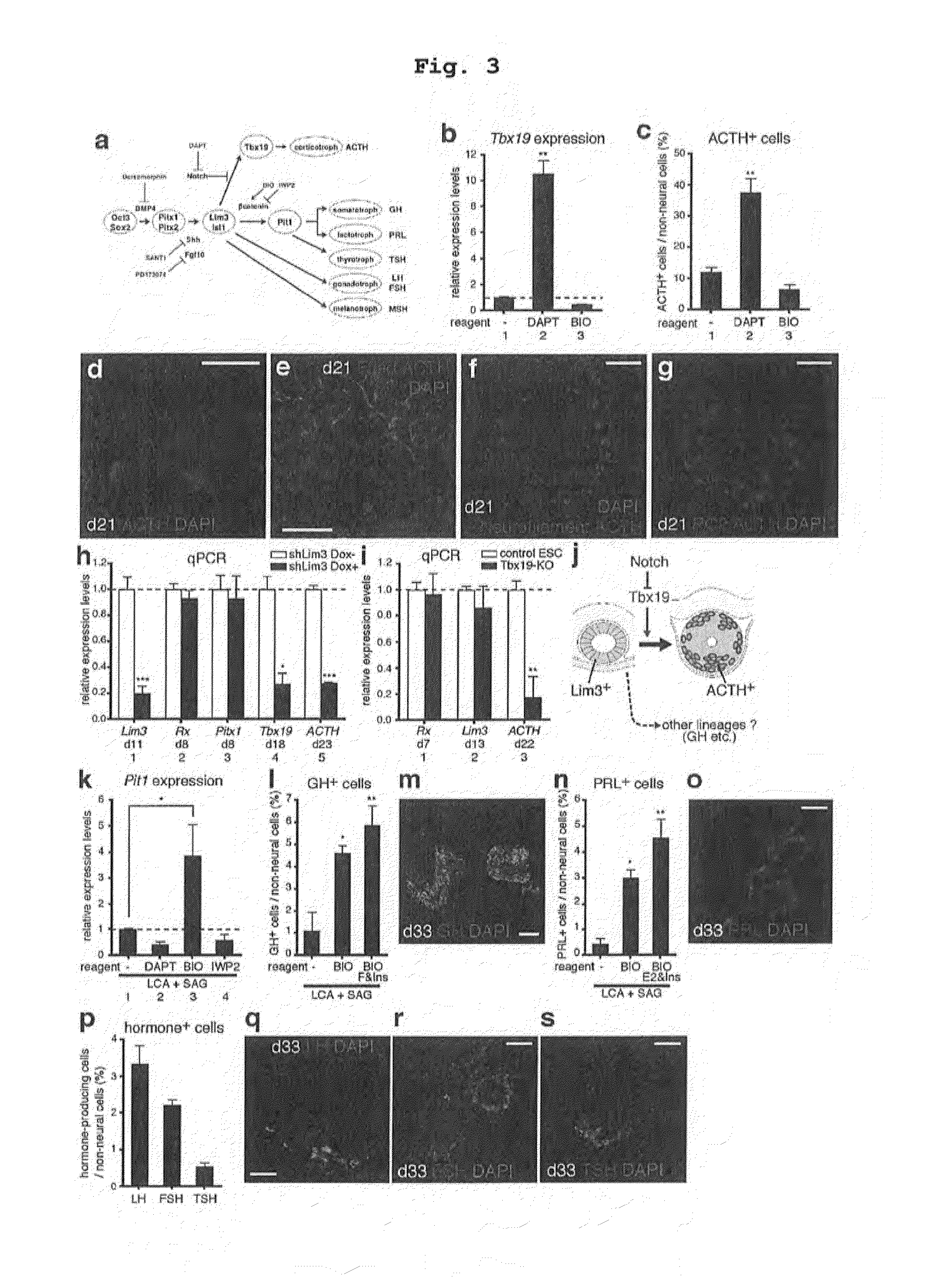Method for culturing stem cell
a stem cell and culturing technology, applied in the field of culturing stem cells, can solve the problems of hardly attracted attention to the possibility of regenerative medicine taking note of functional disorders of the hypothalamus-pituitary gland to date, and the specialization of the pituitary primordium in the initial stages of ectoderm has not been elucidated
- Summary
- Abstract
- Description
- Claims
- Application Information
AI Technical Summary
Benefits of technology
Problems solved by technology
Method used
Image
Examples
example 1
Simultaneous Induction of In-Vitro Differentiation Into Prosencephalon Tissue and Non-Neural Head Ectoderm by Serum-Free Floating-Culture of ES Cell Aggregates
(Method)
[0210]Mouse ES cell aggregates were cultured for 7 days by the SFEBq / gfCDM method (Wataya et al, 2008, PNAS vol. 105, pp. 11796-11801) which is a method for selective-differentiation into prosencephalon, particularly hypothalamus tissue. To be specific, mouse ES cells dispersed into single-cells by a trypsin treatment were plated by 3000, 8000, 10000 or 15000 cells per a U-bottom well of 96 well plate with a low cell-adhesive coating to form aggregates. As the medium, a chemically synthesized medium gfCDM (Wataya et al, 2008, PNAS vol. 105, pp. 11796-11801) was used. Detection was performed using Rx::GFP (GFP knocked into Rx gene locus) as a marker of hypothalamus tissue, and Pitx1 antibody as a non-neural head ectoderm marker.
(Results)
[0211]The ES cell floating aggregates cultured by the SFEBq / gfCDM method for 7 days ...
example 2
Serum-Free Floating-Culture of ES Cell Aggregates and Induction of In-Vitro Differentiation into Pituitary Precursor Tissue by Hedgehog Signal Treatment
(Method)
[0212]Aggregates of mouse ES cells were formed from 10000 cells per aggregate by using the SFEBq / gfCDM method (Wataya et al, 2008, PNAS vol. 105, pp. 11796-11801), and subjected to the floating-culture as in Example 1. Immediately after the start of the differentiation culture, SAG (Danjo et al, JNS, 2011, vol. 31, pp. 1919-1933), a hedgehog agonist, was added at 100 or 400 nM, and the aggregates were cultured for a total of 10-13 days. Since SAG has a several-fold stronger activity than Shh, is comparatively cheap and can be used up to a high concentration, it can cause a strong hedgehog signaling activity (Danjo et al, JNS, 2011, vol. 31, pp. 1919-1933). The expression of Lim3, a marker of pituitary precursor tissue (Rathke's pouch), and the like was confirmed by PCR or cytochemical staining of frozen section by the fluores...
example 3
Production and DAPT Treatment of ACTH-Producing Cells from ES Cell-Derived Pituitary Precursor Tissue
(Method)
[0216]Using the method of Example 2, mouse ES cells were differentiated into pituitary precursor tissue by a SAG treatment (400 nM for 7 days and 100 nM for 3 days, total 10 days). Furthermore, using gfCDM medium, the aggregates were cultured under 40% O2 and 5% CO2 for 12 days in total (total 22 days). Moreover, the aggregates were treated with Notch signal inhibitor, 10 μM DAPT, for one day during days 18-19 or days 20-21 of culture. The expression of Tbx19 and ACTH expressed in ACTH-producing cells was confirmed by cytochemical staining of frozen section by the fluorescence antibody method.
(Results)
[0217]As a result of analysis by the fluorescence antibody method, the above-mentioned aggregate with DAPT treatment showed an enhanced expression of Tbx19 as compared to that without DAPT treatment (FIG. 3b), an increased percentage of ACTH-positive cells (FIG. 3c), and compris...
PUM
 Login to View More
Login to View More Abstract
Description
Claims
Application Information
 Login to View More
Login to View More - R&D
- Intellectual Property
- Life Sciences
- Materials
- Tech Scout
- Unparalleled Data Quality
- Higher Quality Content
- 60% Fewer Hallucinations
Browse by: Latest US Patents, China's latest patents, Technical Efficacy Thesaurus, Application Domain, Technology Topic, Popular Technical Reports.
© 2025 PatSnap. All rights reserved.Legal|Privacy policy|Modern Slavery Act Transparency Statement|Sitemap|About US| Contact US: help@patsnap.com



